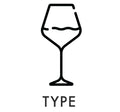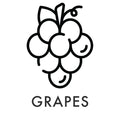Le C des Carmes Haut Brion Pessac-Leognan 2017 750ml










Jamessuckling.com | JS 89
Published: Jul 5, 2021
Still a pleasing red with cherry and berry flavor, light tannins and an easy finish. Slightly dry. Second wine. Needs drinking.
Les-carmes-haut-brion.com
Using a more traditional blend, C des Carmes Haut-Brion focuses on Merlot subtly complemented by Cabernet Sauvignon. The fruit is in the spotlight here, offering an elegant range of aromas. Drunk young, the wine develops a crisp intensity which will gain the patina of beautiful complexity as the years pass.
Blend:
54 % Cabernet Sauvignon
45 % Merlot
1 % Petit Verdot
Colour: Red
Appellation: Pessac-Léognan
Owner: Pichet Family
Estate Manager: Guillaume Pouthier
Consultants: Derenoncourt Consultants
VINEYARDS
Total surface area of the vineyard in use in 2017: 29,6 ha
Area planted for le C des Carmes Haut-Brion : 22 ha
Plantation density: 6,700 - 11,000 plants
Average age of the vines in 2017: 12 years
Soil types: Graves from the Günz epoch, sand from the Pliocène epoch, clay from the Oligocène epoch
Harvesting: 100% hand-picked
Harvest dates: From September 19th to October 3rd 2017
VINIFICATION TECHNIQUES
Vats used: Thermoregulated tanks: Tronconic stainless steel tanks (60Hl) • Wooden tanks (76 Hl) Concrete tanks (50 Hl)
Initial fermentation: 25 - 30 days
Malolactic fermentation in barrels: Partial
Barrel maturing: 70% of one-year oak barrel and foudres
30% new oak barrels
Duration: 12 to 28 months, then concrete vats
Noteworthy features of the vinification and / or maturing processes: All vats were vinified in full grapes and partly in entire bunch. Pigeage only
Composition of the wine: 13 % alc. / 3,70 pH
REMARKS
2017 will most likely be remembered for the spring frosts. But, on those estates fortunate enough to be wholly or partially spared by the weather, it was nonetheless a very successful vintage. Early bud break and rapid growth, followed by even flowering, seemed to pave the way for a precocious vintage. Abundant rainfall in late June, just before the bunches set, meant that the individual grapes were quite substantial in size. Ripening began before the vines had even stopped growing. The maturing process was helped along by the higher-than-average temperatures in August, accompanied by cooler nights which helped to maintain high concentrations of organic acids and aromatic compounds.

